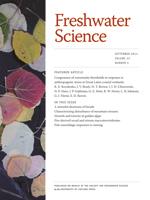Characterizing biologically relevant stream disturbance regimes is challenging, but necessary to answer questions about disturbance effects on ecological processes. No universally accepted approach exists for characterizing stream regimes. Our goal was to evaluate approaches that can be applied to test effects of disturbance on benthic organisms. We defined disturbance as events or environmental conditions caused by changes in stream discharge that affect the stability or habitability of the stream bed. We used several metrics to describe disturbance regimes of mountain streams that were not permanently gauged in 1 catchment, and considered the trade-off between effort required to obtain the data and the quality of information gained. We used an innovative photographic method to assess substrate particle movement empirically as a benchmark for comparison to other indicators of channel stability and to metrics describing hydrologic variability relevant to streambed stability. We used a model selection procedure to choose the best combination of individual variables to explain variation in substrate particle movement and included those variables in a multivariate axis of disturbance that can be applied to evaluate effects of disturbance on benthic organisms. Individual variables with the highest explanatory power were maximum daily increase in discharge and the Pfankuch index of channel stability. Substrate particle size and stream size (drainage basin area) were related to the multivariate index of disturbance, but channel gradient was not. Protocols used to measure substrate stability and to obtain the multivariate index of disturbance were labor intensive, but our analyses indicate it may be reasonable to use more easily measured variables (e.g., Pfankuch index) to estimate disturbance to benthic organisms at local scales, although explanatory power may be reduced. Our analyses provide a menu of options to estimate variation in local disturbance regimes of ungauged mountain streams that may not be adequately explained by extrapolation from hydrographs of gauged streams.
BioOne.org will be down briefly for maintenance on 14 May 2025 between 18:00-22:00 Pacific Time US. We apologize for any inconvenience.
How to translate text using browser tools
1 June 2014
Characterizing disturbance regimes of mountain streams
Barbara L. Peckarsky,
Angus R. McIntosh,
Steven C. Horn,
Katie McHugh,
Doug J. Booker,
Andrew C. Wilcox,
Wendy Brown,
Maruxa Alvarez
ACCESS THE FULL ARTICLE
It is not available for individual sale.
This article is only available to subscribers.
It is not available for individual sale.
It is not available for individual sale.

Freshwater Science
Vol. 33 • No. 3
September 2014
Vol. 33 • No. 3
September 2014
drainage basin area
hydrologic variability
maximum daily discharge increase
Pfankuch Index of channel stability
streambed movement
substrate particle size




